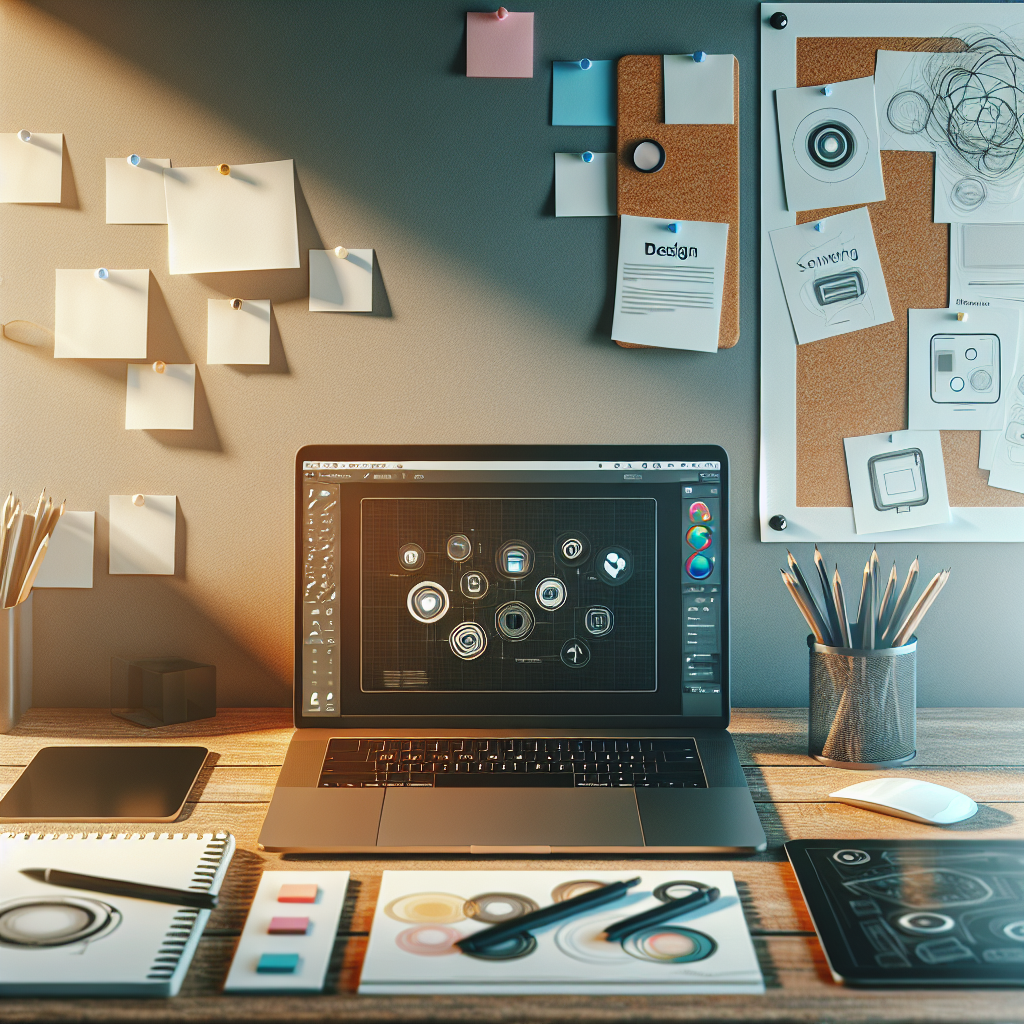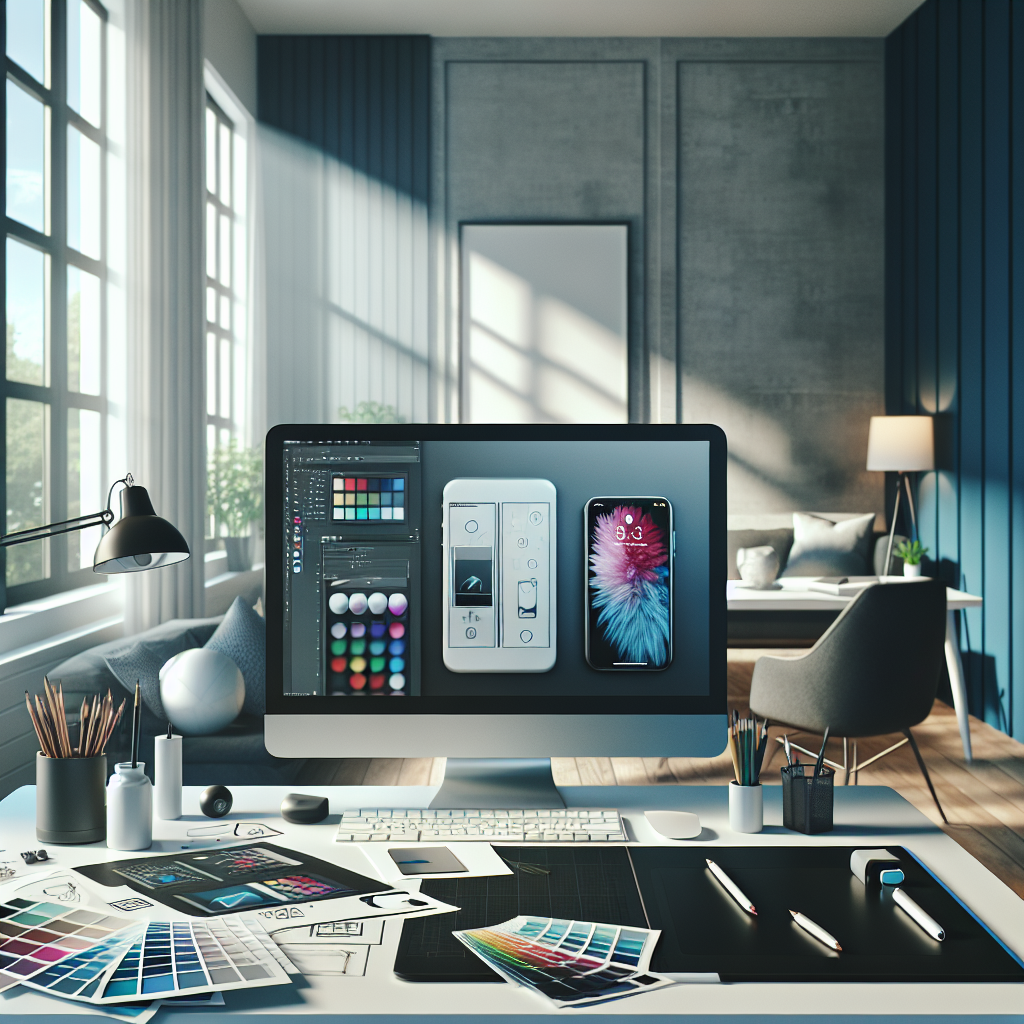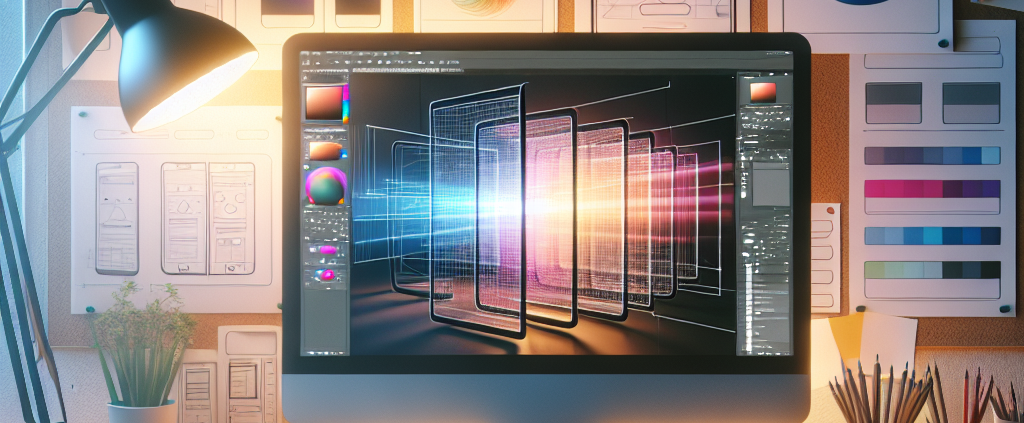How to Design an App for Free: A Step-by-Step Guide
In today’s digital age, mobile applications have become an integral part of our daily lives, facilitating everything from communication to entertainment. As an aspiring developer or a business owner looking to tap into the mobile app market, understanding the essentials of designing an app is crucial. The exciting news is that you can begin this journey without a hefty budget. This guide will walk you through how to design an app for free, leveraging cost-effective tools and methodologies that can bring your vision to life.
Free app design is not only possible but can be a rewarding experience thanks to the plethora of tools available online. These tools allow you to experiment with different design elements, user interfaces, and functionalities without incurring any costs. By utilizing free resources effectively, you can create a prototype that meets your initial requirements and showcases your innovative ideas.
Before diving into the hands-on design process, it’s essential to grasp the basics of app design, including understanding user needs, creating wireframes, and choosing the right color schemes and typography. This foundational knowledge will set the stage for a seamless design experience. Furthermore, with the right strategies, you can ensure that your app not only looks good but also provides an intuitive and engaging user experience.
As you embark on this journey, remember that NS804 is here to assist with expert insights and services. If you’re ready to take your app idea to the next level, don’t hesitate to get a free quote from our experienced team. Let’s transform your concept into a compelling mobile application!
Choosing the Right Design Tools

Embarking on the journey of app design requires selecting the appropriate tools tailored to your project needs and expertise level. The market offers a variety of free design tools that cater to different stages of the app design process, from sketching initial concepts to developing detailed prototypes.
One popular choice is Figma, a web-based application known for its collaborative features, allowing multiple team members to work on designs simultaneously. Its intuitive interface makes it ideal for both beginners and experienced designers. Another powerful tool is Sketch, which is particularly favored by Mac users. While Sketch itself is not free, there are free plugins available that enhance its functionality, making it a worthy consideration for more polished designs.
For those who need a comprehensive suite, Adobe XD offers a free starter plan that includes essential design and prototyping capabilities. It integrates seamlessly with other Adobe products, providing a robust environment for creatives familiar with the Adobe ecosystem. Additionally, InVision offers a free version of its tool, which excels in creating interactive prototypes and user testing, crucial for understanding user interactions before final development.
Choosing the right design tools involves assessing your project requirements, the complexity of the app, and your team’s expertise. With these tools, you can effectively iterate on your designs, receive valuable feedback, and refine your app to meet user expectations. Investing time in learning these tools can significantly enhance your design process and contribute to the success of your app project.
Understanding App User Experience
Designing an app isn’t just about aesthetics; it significantly revolves around crafting a seamless and engaging user experience (UX). Understanding the nuances of UX is crucial in determining how users interact with your app and whether they find it valuable enough to continue using it.
At the core of a successful app user experience is **usability**. An app should be intuitive, allowing users to navigate through features effortlessly. Clear, concise instructions and a logical flow of information can prevent frustration and enhance user satisfaction. Consider conducting user testing sessions to observe how real users interact with your app, which can reveal pain points and areas for improvement.
Another essential aspect of UX is **consistency** across the app. Consistent design language, including fonts, colors, and button styles, helps users feel comfortable and familiar as they navigate the app. This consistency extends to the functionality, ensuring that similar actions lead to similar results, thereby reducing confusion.
**Performance** is also a critical factor in UX. Apps that load quickly and respond swiftly to user inputs are more likely to retain users. Consider optimizing images and code to enhance performance, alongside regularly updating the app to fix bugs and improve features.
Lastly, pay attention to **feedback mechanisms** within the app. Users appreciate knowing their actions have been registered, whether through subtle animations or confirmation messages. By focusing on these UX elements, you can create an app that not only looks good but also provides a gratifying experience, encouraging long-term engagement and loyalty.
Creating a Wireframe for Your App

Once you have a strong understanding of user experience, the next step in the app design process is creating a **wireframe**. A wireframe acts as the blueprint of your app, offering a visual guide to its layout and functionality. This pivotal step helps you organize your ideas and convert them into a structured format, ensuring a smooth development process.
To begin wireframing, start by defining the **core features** of your app. Identify the primary functions and how users will interact with them. This will guide the structure of your wireframe and ensure that essential elements are prominently placed. Consider using tools like Figma, Sketch, or Adobe XD, which offer robust features for creating detailed wireframes.
Focus on **simplicity** and **clarity** in your wireframe. Each screen should have a clear purpose, with minimal distractions. Use placeholders for images and text to indicate where content will appear, but keep the design simple to avoid getting lost in the details. Remember, the aim of the wireframe is to plan the app’s structure, not its final appearance.
Incorporate a **user flow** into your wireframe to map out how users will navigate from one screen to another. This flow should be intuitive, guiding users toward completing tasks without unnecessary steps. Consider different user scenarios to ensure that your design accommodates various user needs and behaviors.
Review your wireframe with stakeholders or potential users to gather feedback. This process can reveal missing elements or areas for improvement, allowing you to refine the design before moving into the detailed design phase. By investing time in creating a comprehensive wireframe, you lay a solid foundation for successful app development, ultimately leading to a more cohesive and user-friendly final product.
Developing a Prototype for Testing

With your wireframe in place, the next logical step in app design is developing a **prototype**. A prototype transforms your static wireframe into an interactive model, enabling you to test the app’s functionality and user experience before actual development begins. This crucial phase helps in validating concepts and uncovering any usability issues early on.
Begin by selecting a **prototyping tool** that fits your needs. Popular options include InVision, Marvel, and Proto.io, each offering unique features that allow you to simulate user interactions like tapping, swiping, and scrolling. These tools enable you to create a realistic representation of how users will engage with your app, making it easier to identify potential improvements.
Focus on **key interactions** and **core features** when developing your prototype. Avoid the temptation to include every minor detail; instead, concentrate on the elements that are crucial to your app’s purpose. This approach ensures that the prototype remains manageable and that user testing yields relevant insights.
Conduct **user testing** with your prototype to gather feedback. This stage is vital as it provides a wealth of information about how real users interact with your app. Encourage testers to explore the app freely and observe their behavior to identify any pain points or confusing elements. Collecting this feedback allows you to make informed adjustments to your design.
Iterate based on the feedback received. Prototyping is an iterative process, and refining your design based on user input is key to developing an app that truly resonates with your audience. By the end of this phase, you should have a well-tested, user-friendly design that is ready to move into the development stage, significantly reducing the risk of costly changes during the coding phase.
Tips for Successful App Design

Designing an app successfully requires more than just creativity; it demands strategic planning and execution. Here are some **essential tips** to ensure your app design process is efficient and effective:
- Understand Your Audience: Before you even start designing, have a clear understanding of who your target users are. This knowledge will guide your design decisions and ensure your app meets users’ needs.
- Keep it Simple: Prioritize simplicity in your design. Overloading your app with features can confuse users. Focus on delivering a seamless experience by emphasizing core functionalities.
- Leverage Consistent Branding: Ensure your app reflects your brand’s identity through consistent use of colors, logos, and fonts. This consistency enhances brand recognition and trust.
- Focus on Usability: User experience should be at the forefront of your design process. Ensure that navigation is intuitive and that users can achieve their goals easily within the app.
- Test and Iterate: Regularly test your app with real users and be open to feedback. Continuous iteration based on user input is crucial for optimizing design and functionality.
Beyond these tips, remember that staying informed about the latest design trends and technologies can give your app a competitive edge. Whether you’re designing an app for the first time or looking to refine an existing one, these strategies will help guide you towards success.
Ready to take your app idea to the next level? Get a free quote from our experts at NS804 and discover how we can help turn your vision into a high-performance app.





Leave a Reply
Want to join the discussion?Feel free to contribute!